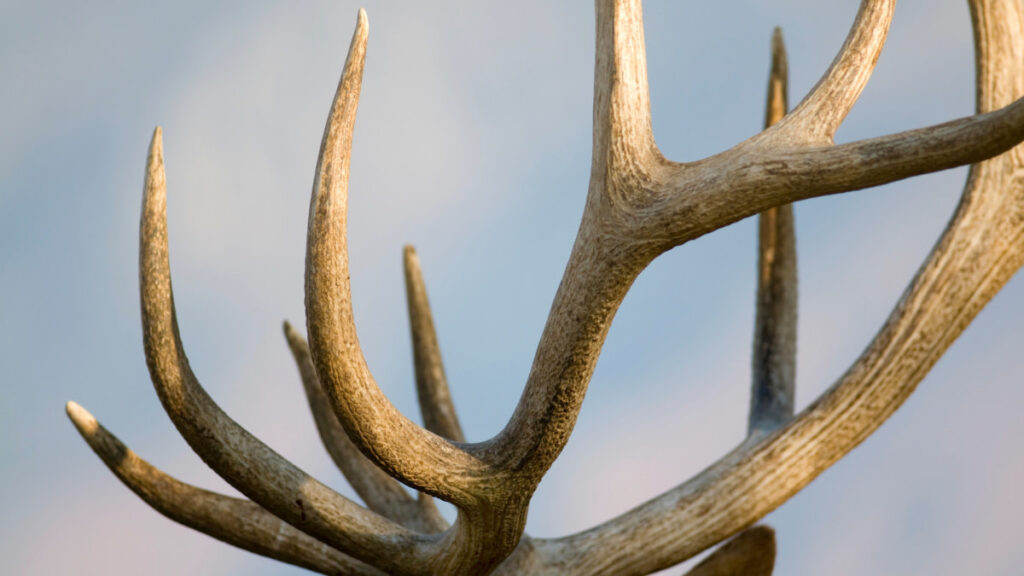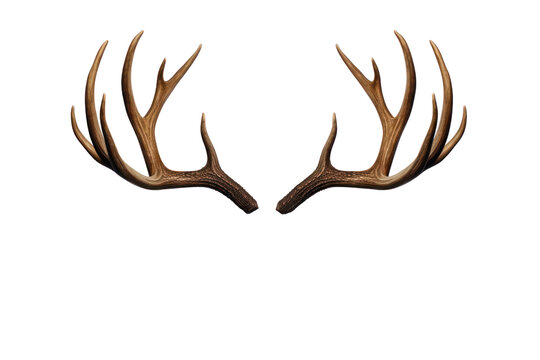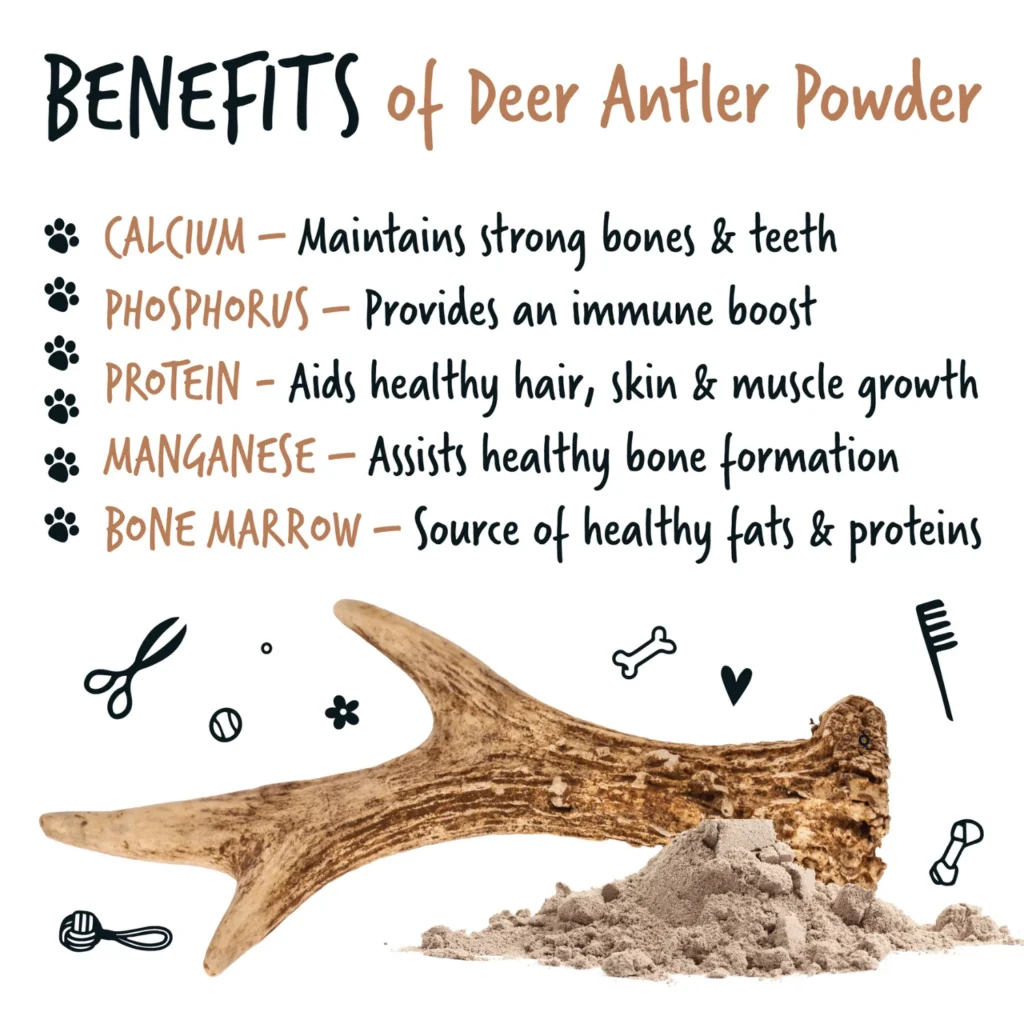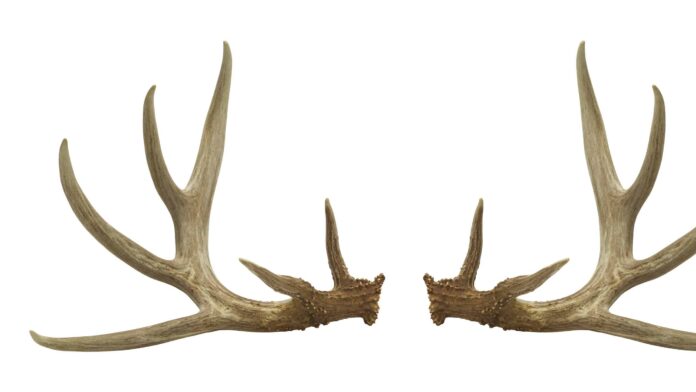INTRODUCTION

Antlers are the bony structures that grow on the heads of male deer. They are branched and are shed and regrown every year. Antlers help male deer attract females and fight other males during mating season. Unlike horns, which are made of keratin and are permanent, antlers are temporary and grow from special spots on the skull. When they are growing, they are covered in a soft skin called velvet, which provides nutrients. Once the antlers are fully grown, the velvet falls off, leaving the hard antlers.
Types
There are several types of antlers based on shape and growth patterns. Here are some common types:
1. Forked Antlers
Description: These antlers split into two main beams.
Examples: Common in white-tailed deer.
2. Palmed Antlers:
Description: The antlers have broad, flat sections that resemble a palm.
Examples: Seen in species like the moose.
3. Beam Antlers:

Description: These have a long, straight main beam with several tines (points) branching off.
Examples: Found in species like the red deer.
4. Crown Antlers:
Description: Antlers that have a rounded shape with multiple points at the top.
Examples: Common in sika deer.
5. Sculptured Antlers:
Description: Antlers that have unique shapes with many twists and turns.
Examples: Found in certain species like the Sitka deer.
6. Unbranched Antlers:
Description: These are simple, single spikes without any branches.
Examples: Usually seen in younger males before they fully mature.
Medicinal Properties
Deer antlers are thought to have several health benefits, especially in traditional
medicine. They may help reduce inflammation, which can relieve pain and
conditions like arthritis. People believe that deer antlers can also support
joint health and flexibility, possibly helping to repair damaged cartilage.
Some cultures use deer antler extracts to boost the immune system and improve
overall health. In traditional Chinese medicine, deer antlers are believed to
enhance sexual health and increase energy and vitality, making them popular in
health supplements.

How the supplements are made
To make antler velvet supplements, young, uncalcified deer or elk antlers are surgically removed.
The animals are put to sleep using anesthesia before the velvet antlers are cut off near the base. Then, the velvet is removed from the antler bone, dried, ground into a fine powder, and processed into its supplement form.
The powder is sometimes sold in bulk or capsule form. You can also find deer antler extracts and sprays, which are made by combining the powder with an extract solution.
This method must be applied by the doctor only.
Health Benefits
Here are some potential health benefits of deer antlers:
Bone and Cartilage Growth
Test-tube studies suggest that antler velvet could treat bone disease and cartilage damage. Plus, one animal study found that it increased femoral bone length and bone enzyme levels
Osteoarthritis Treatment
Deer antler velvet contains chondroitin’s, a component of cartilage, which might improve pain levels in people with osteoarthritis. What’s more, other compounds in antler velvet might strengthen bones Bottom of Form
Boosting Immunity

Some studies suggest that deer antler extracts might enhance the immune system. This can help the body fight off infections and illnesses more effectively, contributing to overall wellness.
Improving Sexual Health
In traditional Chinese medicine, deer antlers are believed to improve libido and sexual function. They may enhance fertility and overall sexual performance, making them popular among men seeking to boost their sexual health.
Energy and Vitality
Deer antler supplements are often marketed for increasing energy and vitality. They may help reduce fatigue and improve stamina, making them appealing for athletes or those with demanding lifestyles.
Recovery from Exercise
Athletes sometimes use deer antler extracts to help with recovery after intense workouts. The anti-inflammatory properties can aid in reducing soreness and speeding up the healing process.
Side Effects
While deer antler supplements are often marketed for their health benefits, they can also have potential side effects. Here are some of the common side effects associated with their use:

- Allergic Reactions
- Digestive Issues
- Hormonal Effects
- Increased Blood Pressure
- Interactions with Medications
- Potential Contaminants
- Overuse and Dependency




